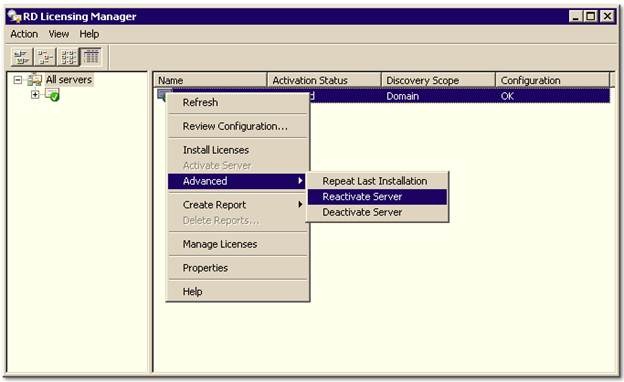
(If you wonder why am I installing it on a domain controller be sure to check PART 10 -It will be available soon).
Remote desktop services license server install#
Let’s go ahead and install the RD Licensing role. (I will show you later how you can remove Licensing Pack with powershell, in case that you have a lot of licensing packs on your RD Server and you need to remove just specific one without rebuilding the database)
Remote desktop services license server upgrade#
We can do an in-place upgrade which I am not a fan of (You will need to delete the database and upgrade the server) or we can install new Windows Server 2016 and install Licensing role on it with 2016 CALs and decommission the old RD Licensing server. This is the question that comes a lot when we speak about RD Licensing and the answer is that there is no method which we can use to convert our licenses from 2012 to 2016. Another important thing to note is that if your RD Licensing server is 2016 then you can host CALs from all previous versions but if it is 2012 then you can host CALs older then 2012 and that version. In other words, you cannot use a 2012 RD Licensing server to service Server 2016 RDSH or RDVH servers. Keep in mind that CALs must correspond to the version of Windows Server that the user or device is connecting to. You could get away with buying one RDS Device CAL, and that particular desktop would have a CAL assigned to it, and anyone who used it would be able to use Remote Desktop Services. When it’s set to device, the once of the number of CALs is used up, the Remote Desktop server will refuse additional connections. So let’s say you have a warehouse and you have one desktop out there, but 10 people use it. This allows one device to be used by any user to connect up to Remote Desktop Services on any server.

It’s on you to make sure that you’ve bought the appropriate number of CALs and that you’re obeying your licensing agreement. If you have it set to Per User, it accepts any and all connections. When you move over to user CALs, or the user mode, you need to make sure that you buy the appropriate amount of licensing. So let’s say you have executives that have both a desktop and a laptop, and even some type of a tablet, they could remote desktop on all of those devices, and even simultaneously, and you would still be within your licensing requirements. PER USER – One user (using any device) can use RDS functionality on any serverĪn RDS User CAL means that you’re licensing the user, so one user using any device, and in fact they can use multiple devices at the same time, can use Remote Desktop Services functionality on any server.Once we have installed the server we have to activate it and we need to purchase Client Access License, or CALs that match the licensing mode that we choose.

Once we install RDS we must install a license server within 120 days or RD Sessions services will stop. The last piece of the puzzle is RD Licensing server. Each server already has 2 CALs for admins and that’s each and every server, but the idea is that there are just going to be used by admins to remote desktop in and go through and configure the server.


 0 kommentar(er)
0 kommentar(er)
